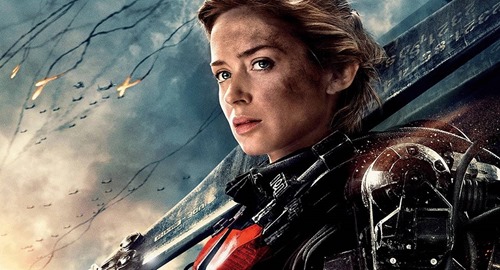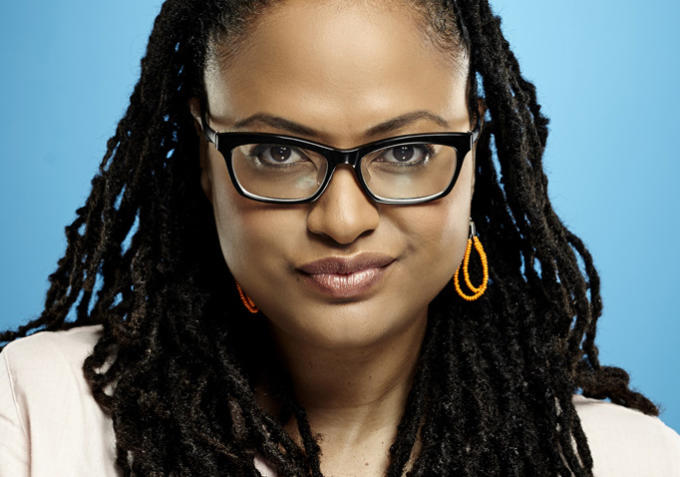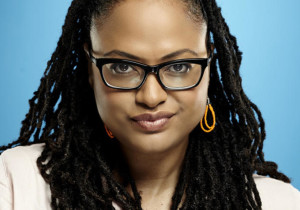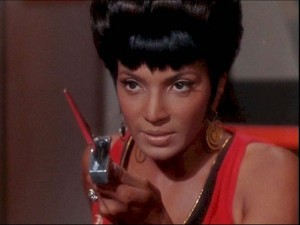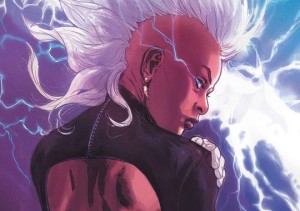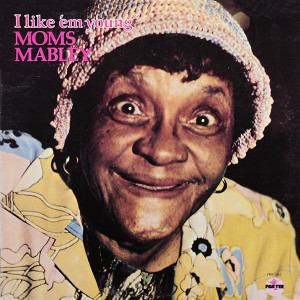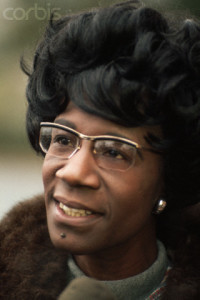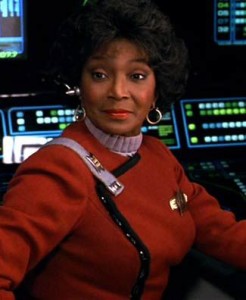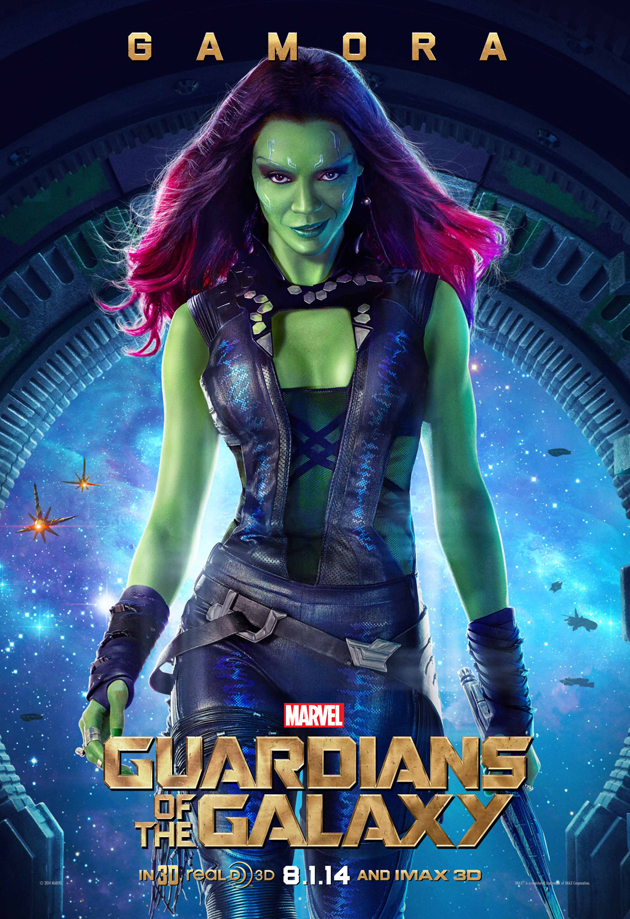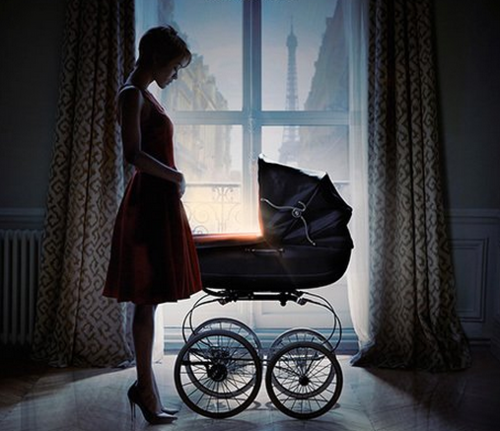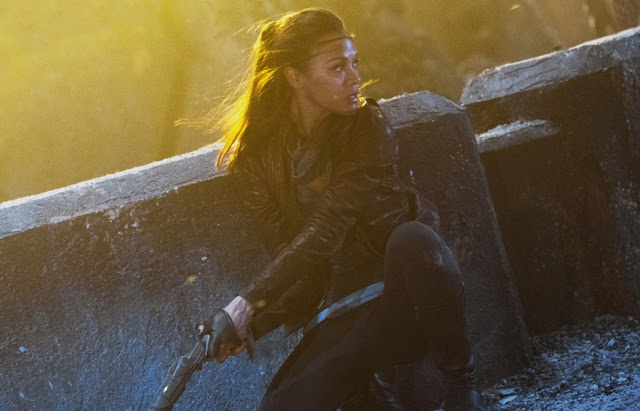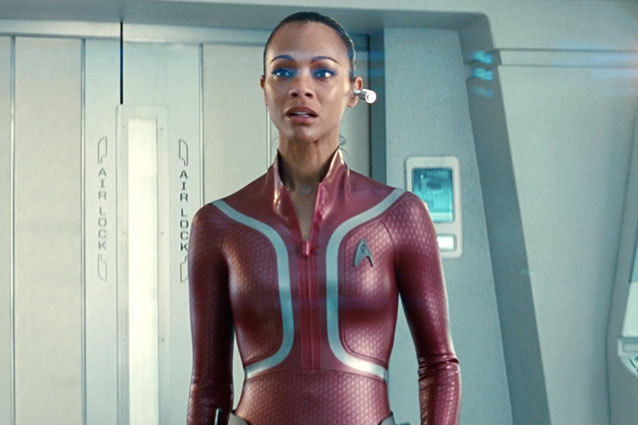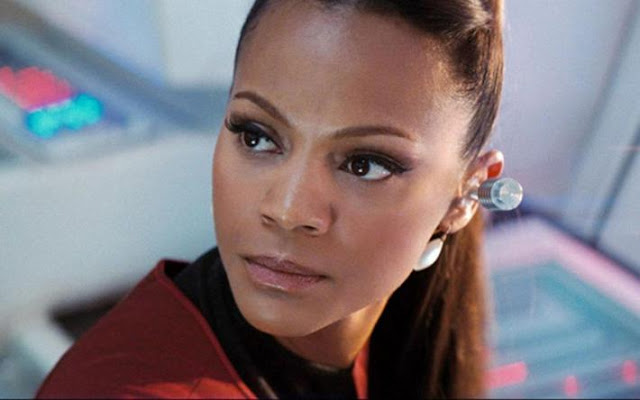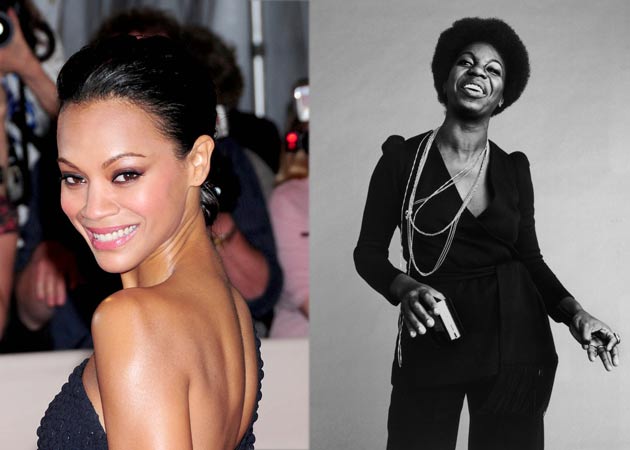Written by Katherine Murray.
A few weeks ago on Pop Culture Happy Hour, Audie Cornish succinctly explained what’s so great about Spy: that it’s a movie custom built to use Melissa McCarthy’s talents, by a director she’s worked with for years. “The director showed us what he loves about her,” she said. Paul Feig was telling us, “Oh, I see something in this person that is so fantastic, and I’m gonna make it so the audience sees that, too.”
McCarthy shines in Spy partly because Spy was built for her to shine in – that’s not to take anything away from her performance; movies are tailored to fit A-list stars all the time. Finding a great actor and creating the right role for them is just as valid a strategy as creating a great role and then finding the right actor. That said, watching Spy reminded me that there are other female actors I’d love to see starring in custom-built projects – these are the first five that come to mind.

Emily Blunt as a True Detective
Emily Blunt has been improving every film she’s been a part of since The Devil Wears Prada. Despite being friendly and cheerful in interviews, she has a gravitas and intensity on screen that makes us believe she could be a hardened soldier who kills squid aliens. More importantly, she exudes a quiet, self-assured kind of confidence that doesn’t involve a lot of posturing.
So far, most of Blunt’s big roles have been opposite protagonists played by somebody else – Tom Cruise in Edge of Tomorrow, Joseph Gordon-Levitt in Looper – but it would be great to see her as the central character in a similar high-concept science fiction movie. Even better, though, her grounded, more-beneath-the-surface stoicism could also make her the perfect candidate to star in a grimdark detective movie. Or, if you want my heart to explode from happiness – let her solve crimes (maybe partnered with Jessica Chastain) in season three of True Detective.

Zoe Saldana in Pirates of the Caribbean 6: The Sequel That’s Actually Good
Zoe Saldana is an awfully good sport. She was the hot alien in Avatar, the hot alien in Guardians of the Galaxy, and the hot human who meets aliens in Star Trek (2009). And, while I’m aware that she was also given the lead role in Colombiana, that was also mostly about being hot. Because I haven’t seen her earlier work, there’s a certain sense in which I’m taking it on faith that she has more acting chops than this but, as someone who’s been more than willing to pay $14 to see her be someone’s hot girlfriend a whole bunch of times, I’d also be willing to pay $14 to see her as something else.
The most obvious choice would be to make a better version of Colombiana – what Salt was to Angelina Jolie’s turn in Tomb Raider – an action movie that isn’t about looking sexy and stuff. But what I’d really like to see is – if we’re making a thousand million billion sequels anyway – a legitimate, well-written, exciting spin-off to Pirates of the Caribbean about Anamaria’s adventures on the high seas. I get that Johnny Depp is single-handedly the thing that saved Curse of the Black Pearl from sucking, but if they gave it an honest try and brought in Jennifer Lee as a writer, Disney could make this work.

Lucy Liu in a Quentin Tarantino Robot Movie or a Good Romantic Comedy (I’ll Take What I Can Get)
In the category of Missed Opportunities I Won’t Stop Complaining About, Lucy Liu, a thousand times over, should have been cast as Sherlock Holmes in Elementary. Ever since she showed up on Ally McBeal she’s had the rare ability to play a total asshole while making us all kind of love her. Also, we love her when she’s collecting people’s heads (NSFW). Despite this, she’s also shown us that she’s capable of playing warm and funny in addition to tough-as-nails, murderous, and cold.
One dream scenario would be for Quentin Tarantino to fully embrace his love of Asian cinema, and make that almost-all-Mandarin-Chinese-language action movie (set in the future, with robots) that you know he’s always wanted to make. Lucy Liu could totally go on a quest for revenge as the star of that movie. Failing that, I’d settle for a nice romantic comedy where Liu stars as a woman who’s smart and driven and a little bit acerbic, but doesn’t need to get over herself somehow or act dumb in order to fall in love.

Octavia Spencer in a Dark Comedy about Hollywood
Octavia Spencer spent a long time being typecast as “that crazy lady” before she started to land more prominent roles. Even in The Help, for which she’s probably best known, she was still kind of “that crazy lady (who has a legitimate reason to be pissed off about racism [but she’s so funny when she talks about it that we don’t need to question our own attitudes and beliefs]).” And, while I had no problem taking her seriously in Snowpiercer, it’s true that she has some serious comedy chops.
I think the ideal movie for Octavia Spencer is actually something close to Spy – something that takes the way she’s been typecast throughout her career, and then uses her range as an actor to turn those expectations around. Maybe a dark comedy about a seemingly crazy lady who has more depth and sadness to her personality – like Funny People, but not so on-the-nose. Hell, it could even be a self-referential dark comedy about the way black actresses are cast in Hollywood. That would be kind of amazing.

Mila Kunis in an Emotionally-Driven Russian Spy Movie
Before you say it – yeah, I know. Mila Kunis is already a huge star, and Hollywood already clearly believes she’s a box office draw. Even so, I don’t think I’ve seen her yet in a role that’s tailor made for her strengths as an actor – Black Swan (which took advantage of the confident, knowing vibe she gives off on camera) came close, but that was a supporting role opposite Natalie Portman. Last year’s Jupiter Ascending didn’t seem to know what a goldmine it had in either Kunis or Channing Tatum and wrote them both to be boring as hell while it focussed on special effects.
While Kunis got her start on That 70s Show, there’s an edge to her delivery that seems wasted on straightforward comedy, and she seems to get swallowed in sci-fi and fantasy movies. If I were building the perfect film for Mila Kunis to star in, I think it would be a complex, semi-realistic espionage movie where she plays a Russian double-agent. The story would be grounded somehow in the complicated feelings the agent had about Russia – more in the tone of The Debt than Mission Impossible. Her natural charm would make her an expert at getting close to her targets, but her unexpectedly warm heart would make it hard to pull the trigger.
I would pay real money to watch any of these movies – so, there you go Hollywood. That’s a guaranteed $14 you’ll get back from your investment. The larger point though, is that I bet, if we actually tried, we could come up with amazing projects for lots of women in Hollywood that aren’t based on assuming that the only thing we want to watch them do is act sexy (or crazy). There’s no shortage of talent in the film industry, so, maybe rather than waiting for screenwriters to craft great starring roles for women at large, Hollywood could also take a closer look at the stars who are already there and custom build some awesome Spy-like films for them.
Katherine Murray is a Toronto-based writer who yells about movies and TV (both real and made up) on her blog.
